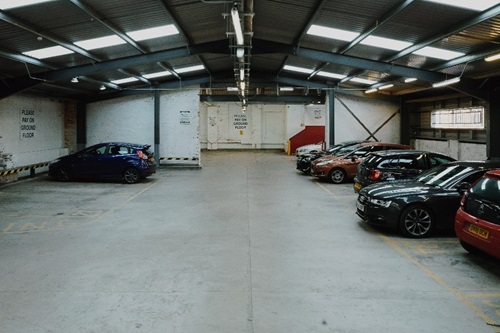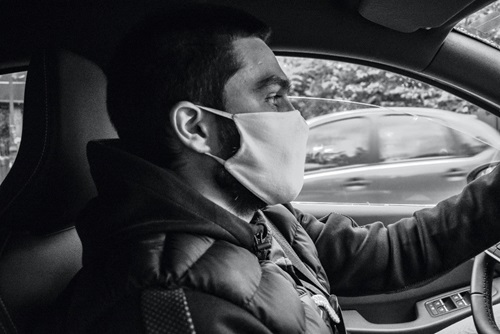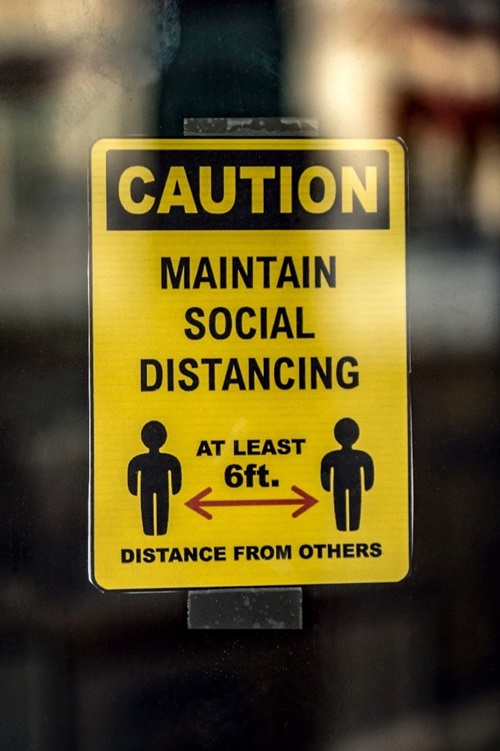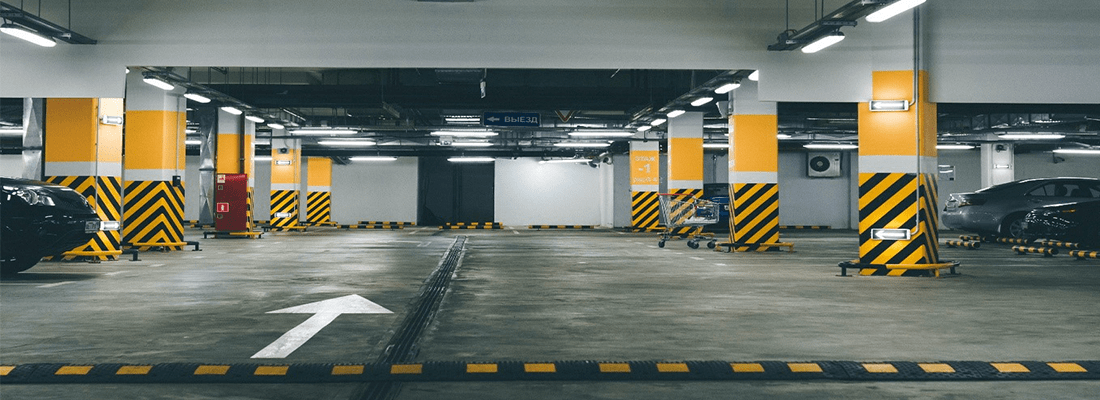Loading component...
10 ways to adapt off-street parking for safer travel

As lockdowns are slowly lifting, the immediate effect is seen as there is again an increased spread of COVID within Europe according to the European Centre for Disease Prevention and Control (ECDC). If we want to prevent further spread of the virus without having to have continuous lockdowns, all areas of life, from schools to supermarkets, and from public transport to parking, should play a crucial role in controlling further spread of the virus by adjusting the environment for a new safer normal. In this article, we will dive into optimising off-street parking to help fight further spread of the virus within this aspect of the mobility sector.
How COVID-19 spreads
To be able to prevent further spread, it is firstly important to accurately find out what the virus is and how it is transmitted. According to the World Health Organisation, current evidence suggests that COVID-19 spreads to other people through:
The relationship between parking and COVID-19
As driving decreases most direct person to person contact, it is one of the safest ways to travel during the pandemic and more people are expected to value using a private car, where in the US used cars are sold like hot cakes. If, however, more people make use of their car, this means that more people will need to park and will have to make use of the carparks as well.
Off-street parking is often covered parking, which means it is not naturally ventilated by outside air and there are more areas where people might have direct contact with garage personnel or indirect contact through payment machines and doorknobs thus increasing the chances of spread.
This being the case, there are plenty of improvements which can be made in the off-street garage to further prevent spread. Especially off-street parking in areas which are densely populated or even parking garages which belong to hospitals.

Ten steps for off-street parking to help prevent the transmission of the Coronavirus
Following are some preventative measures which can be taken into consideration to help prevent further risk of infection:
1. Increase ventilation: The first and most crucial step is to be aware of the ventilation in the garage; is it working? And it is up to standards? Preferably, any indoor space should filter indoor air. If preparing for the future, it might be worth considering changing the air filtration system, as research indicates that, for example, high-efficiency particulate air (HEPA) filters can remove 99.97% of particles that are 0·3 microns or larger. This could be especially good for locations with higher risks, such as indoor hospital parking. Or to ventilate with outdoor air as it is vital to diluting airborne contaminants and helps to decrease the chance of disease transmission. Simply opening the garage door, could help as well.
2. Lessen person-to-person contact - If possible automate as much of the garage as possible to decrease risk of spreading the disease.
3. Make person-to-person contact as safe as possible - If automation is not possible, for example, if the parking needs personnel at the location to handle security and/or transactions, be sure that they disinfect their hands regularly, that they keep appropriate distances and let all people in the garage wear masks.

4. Post educational signage in the garage - Remind people to disinfect their hands by putting up signage with instructions on staying clean in the garage. Also, included on the signage could be to wash your hands often with soap and water for at least 20 seconds, to not touch your face and to wear a facemask.
5. Strengthen cleaning protocols - Primarily, it is important to increase the frequency of cleaning the common surfaces which people touch, such as doorknobs and possible ticketing or payment machines.
6. Payments online - cashless payments are on the rise in Europe and besides it being quite convenient to automate the process for the consumer, it is also a way to decrease the surfaces which people need to touch. By making it possible for people to pay online, they will not need to hand over cash to personnel in the garage or touch any payment machines thus decreasing surface contact. There are numerous companies, such as Mobypark or Elparking which make it possible to reserve parking and pay for it online.
7. Implementation of license plate recognition or an IoT software as an access system - by implementing a way for cars to enter the garage without people needing to touch anything, further contamination through indirect contact is reduced.
8. Let people register for the parking with their name, email and phone number. - If any of the people learn that they have the virus and they have made use of the garage. Health organisations can more easily inform others who have parked in the same garage as well and it can help with the search of other people who might have gotten the virus and urging them to quarantine to further prevent spread. This can be offline, or it is possible to have people reserve their parking in advance through, for example, a parking platform.
9. Modified layouts and procedures - Ensure that people can keep 1,5 meter distance at all times throughout the parking. If there is an elevator, indicate a maximum number of people who can enter the elevator.

10. Maintain optimal humidity: Viruses seem to survive better in mid-humidity environments. Parkings can increase or decrease humidity via heating and ventilation systems to maintain an optimal range of 40 to 60%, or by purchasing and installing portable humidifiers.
Each sector should take responsibility to ensure a healthier environment, especially the mobility sector as the virus seems to spread as soon as people start being mobile again. By implementing the steps above and adjusting the environment of the off-street parking, these locations can be safer for people to start and end their journeys.


